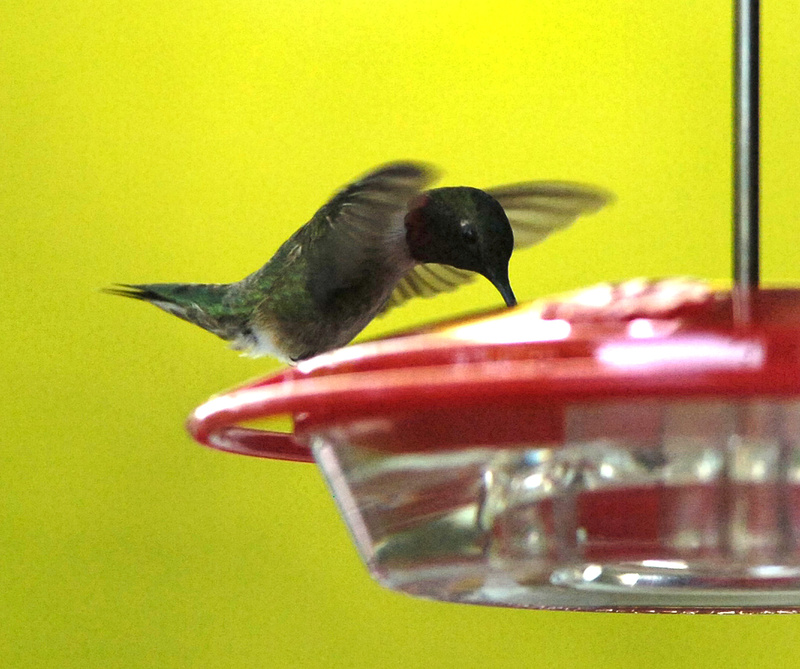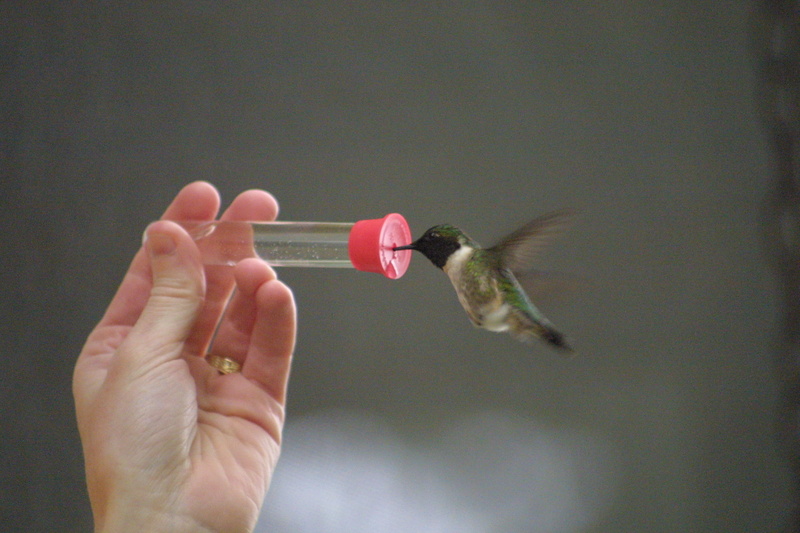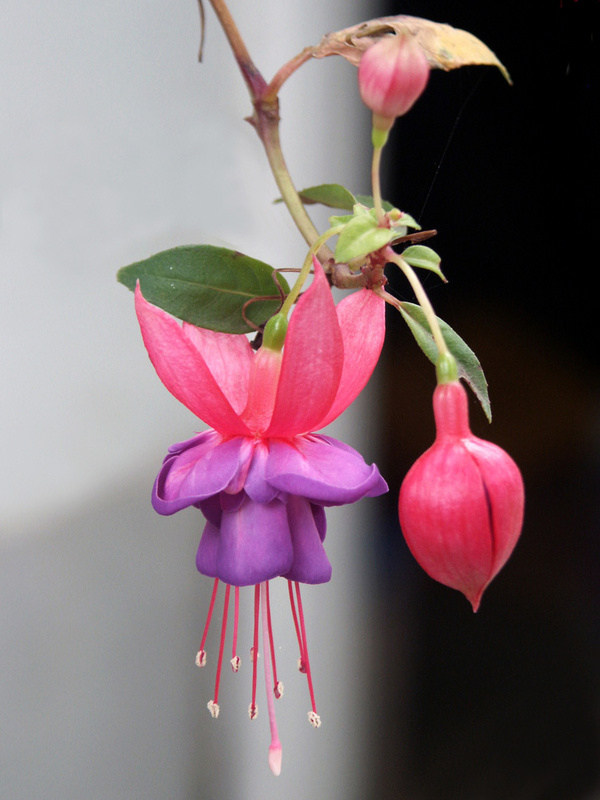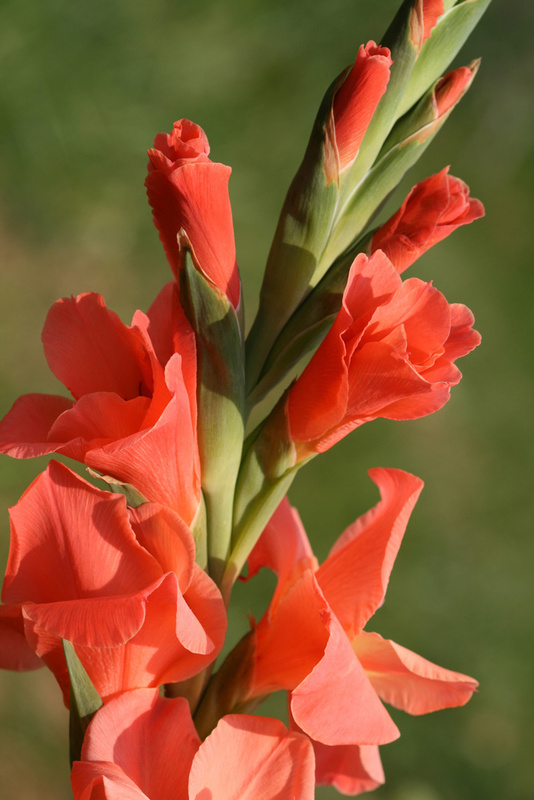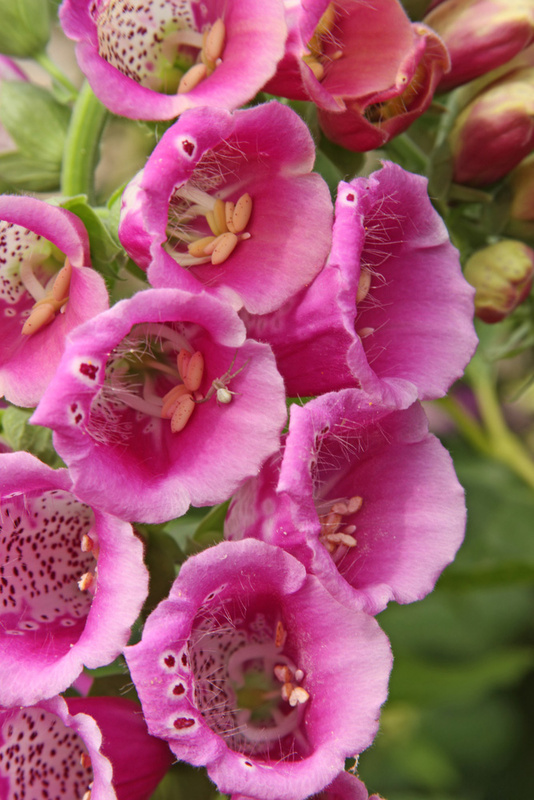They’re usually less than 4 inches long, but the ruby-throated hummingbird is a fascinating creature to watch.
With its long beak and helicopter-like hovering ability, the tiny bird can go from flower to flower in your garden looking for food. Just like a bee, but a lot more fun to watch.
But if you want to have the privilege of watching the ruby-throat in your own backyard, you need to know what attracts the nectar-seeking birds.
“Because of their long beaks, tubular flowers are easier for them to get into, and it doesn’t matter how big the tube is,” said Lois Berg Stack, a horticulture specialist with the University of Maine Cooperative Extension in Orono. “Petunias, sunflowers, hostas and a lot more are all good.”
The first thing you should know, if you’ve never thought about trying to draw hummingbirds to your yard, is that the ruby-throated hummingbird is the only species we see in any quantity in Maine, usually from May to October.
The ruby-throat is thought to be a little more aggressive, and might chase its fellow hummingbirds away. That said, it’s not uncommon for Maine birders to have more than one hummingbird in their yard at the same time.
“I’ve seen in Arizona where you can get multiple hummingbirds using the same feeder,” said Bob Bittenbender, assistant property manager for the Maine Audubon’s Gilsland Farm in Falmouth and an avid birder. “But here I usually see one at a time.”
So here then are some the basics to help you attract hummingbirds.
COLOR THEIR WORLD
Hummingbirds are generally thought to be attracted to bright colors. Stack says that orange, red or yellow will do. There seems to be a trend among makers of hummingbird gadgets to use only red. In fact, some of the liquid nectar foods sold for hummingbirds have red coloring. Many bird people will tell you to avoid those. Stack says some red food colorings have been known to cause liver problems in birds.
“People should stay away (from the colored foods)” said Jeannette Lovitch, at Freeport Wild Bird Supply. “Some of those contain more (of the red food coloring) than is recommended for humans.”
MAKE IT SIMPLE
If you want to feed the hummingbirds, the best food besides plant nectar is probably a simple sugar and water solution.
“No honey, no artificial sweetener, just table sugar and water,” said Stack.
Lovitch and others recommend one part sugar to four parts water. It’s important to boil the water, so the sugar doesn’t just drop to the bottom of the solution. But once mixed, you can store the solution in the refrigerator.
COME CLEAN
If you use a feeder, it’s very important to clean it often, probably every day in the heat of summer, when mold and bacteria can grow. Some feeders come with little brushes so you can scrub the inside of every little feeding port. Or you can use a pipe cleaner to get into tiny spots.
For easier cleaning, you may want to buy ones that come apart, so it’s easier to reach spots. Also, consider placing the feeder in at least light shade. So the sun doesn’t bake the nectar solution, and because hummingbirds often feed on the edge of a forest.
NATURE’S WAY
If you don’t want to clean feeders, you might consider planting flowers that attract hummingbirds. The general rules of thumb include tubular shapes and bright colors. Stack says a cluster of brightly colored flowers will do a better job attracting than one brightly colored flower.
Stack says that the tube shape can be very small and still attract hummingbirds. She does say that single flowers do better than doubles. A single rose, for example, may have five petals while a double will have multiples of five. The fewer petals, the easier it is for the bird to get to the flower’s nectar.
Some common flowers known to attract hummingbirds include fuchsia, hollyhock, columbine, delphinium, gladiolus and daylily. For a longer list, see the box accompanying this story.
FEEDERS AND GADGETS
Lovitch recommends “a good, basic feeder” that is easy to clean. But if you look online you’ll find all sorts of interesting gadgets and feeders that might be fun to try out. One is the Hum Sweet Hum, which attempts to mimic a hummingbird’s natural feeding source — clusters of flowers. It looks like a red model spaceship, with 54 feeding ports per tier, and can hold 16 ounces of nectar per tier. It’s made in Grand Rapids, Mich., and the feeders can be found online at www.lovemybirds.com.
The single-tier feeder sells for $49.99; the three-tier goes for $115.99.
There are also hats and masks with little feeding tubes on them, so people can have the thrill of a hummingbird landing inches from them. There are also little feeding tubes you hold in your mouth that can be found online.
Lots of Maine birders say that once they start getting hummingbirds in their yards, the hummers check the tubes out and seem to be comfortable flying very close to them.
But Bittenbender, at least, is one avid birder who wouldn’t want to get that close.
“I like to watch from a distance,” said Bittenbender.
Staff Writer Ray Routhier can be contacted at 791-6454 or at:
rrouthier@pressherald.com
Send questions/comments to the editors.


